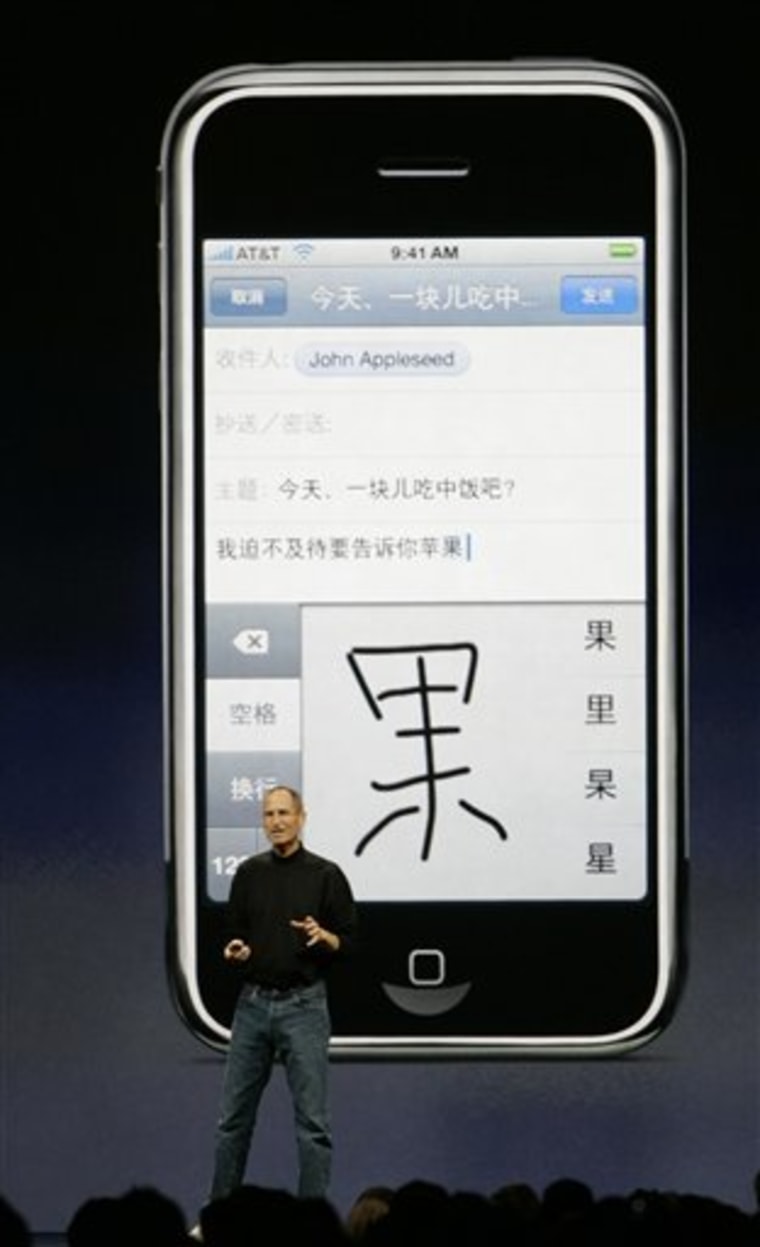Apple’s new iPhone — faster, cheaper and with more features — is winning praise from analysts who say the device has already more than earned its place in cell phone history.
The company, aiming to make its goal of selling 10 million iPhones by the end of this year, Monday slashed the price of the phone by half from $339 to $199 on its least expensive model, and said it will have faster 3G networking speed, as well as GPS.
“Whether or not they make their goal of selling 10 million iPhones by the end of the year doesn’t matter,” said David Chamberlain, principal wireless analyst for In-Stat Research.
“Apple has absolutely succeeded in this market, whether they hit that number,” he said. “The iPhone has forced all the major handset manufacturers in the same direction.”
That direction includes having a touchscreen and combining smartphone features, like calendar-keeping and e-mail, with entertainment uses, including music.
The new phone, which will go on sale July 11 in the United States and 21 other countries, is being called the iPhone 3G, a reference to the faster Internet surfing and e-mail access that it will get from AT&T Wireless’ third-generation cellular network.
3G speed means the phone is capable of more quickly processing data, at rates of up to 2 megabits per second. The original iPhone was 2.5G, which generally transmits data at a rate of between 144 and 384 kilobits per second.
The phone’s slower speed for Web browsing speed has been users’ biggest complaint. Also high on the wish list has been the addition of GPS, which Apple also said will be part of the new phone.
Probably the best news for consumers was the price drop, to $199 for the 8-gigabyte phone, and $299 for the 16-gigabyte version.
“The pricing is great,” said Bill Ho, research director for Current Analysis’ wireless services. “It’s a very good strategy to migrate (buyers) from early adopters to mainstream buyers.”
“Compared to a year ago, when the first iPhones came out, at prices of $499 and $599 – later dropped to $399 and $499 – this is a pretty huge step to take,” said Ramon T. Llamas, IDC senior research analyst for mobile technology and trends.
“The iPhone retains its iconic look and feel, but it’s much more obtainable by folks out there, and it’s competitively priced against similar smartphones,” he said.
The lower pricing will be made possible by subsidies from AT&T, the exclusive carrier of the iPhone in the United States. The Associated Press reported that AT&T said its profits will take an estimated $600 million hit because of the phone’s new lower price.
“Considering the number of people who are switching from other carriers in order to get the iPhone, that’s a subsidy well worth it for AT&T,” said Michael Mace of Rubicon Consulting.
AT&T iPhone plans start at $59 a month. Rubicon Consulting surveyed 460 iPhone users earlier this year, and found that they are spending an average of $90 a month for their phone service, he said. “That’s $1,000 a year per customer that they’re getting.”
Mace thinks that iPhone pricing might drop even further in the fall, down to around $100.
“A lot of users are very price-sensitive, and getting down to a more affordable price is absolutely critical,” he said. “The iPhone, even at the new prices, is still more expensive than a lot of the smartphones out there. A lot of them are $99.”
Still, “Apple really responded quickly” to the market’s demands for such features as GPS, 3G and lower pricing, said Llamas of IDC.
“These are big steps that the company took. They’re really hitting on all the right cylinders.”
One of the disappointments — and perhaps surprises — is the wait for the new iPhone to be available.
“Usually when Apple announces something like this, the product is in the stores that day,” said Rob Enderle, president of The Enderle Group, a consulting firm that studies technology trends.
The new phone won’t be on the market a moment too soon, he said.
The iPhone faces “a slew of competition rolling out the second half of this year,” from various companies, including Samsung, HTC, LG and Sony, with similar phones, he said.
Samsung’s Instinct, dubbed an iPhone killer, is set to debut June 20, and is being offered exclusively by Sprint Nextel, and is compared one-on-one with the iPhone at Sprint’s Web site.
“I can see the iPhone announcement absolutely kicking the stuffing out of the Instinct launch, which is a little sad,” said Chamberlain. “That’s a phone that has been under wraps, and was honored this spring at the CTIA-The Wireless Association annual show.
Apple said yesterday more than 6 million iPhones have been sold so far, and the company seems well on its way to making its 10 million number.
Reaching it would mean that Apple would have about 1 percent of the worldwide cell phone market. Currently, Nokia has a nearly 40 percent share of the market worldwide, followed by Samsung with nearly 16 percent, and Motorola at 9.4 percent, according to IDC Research.
